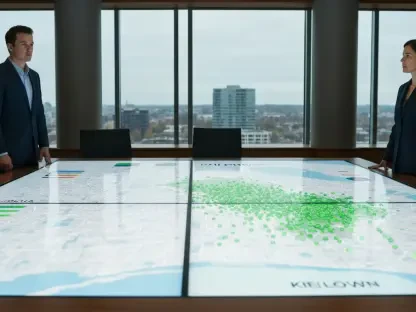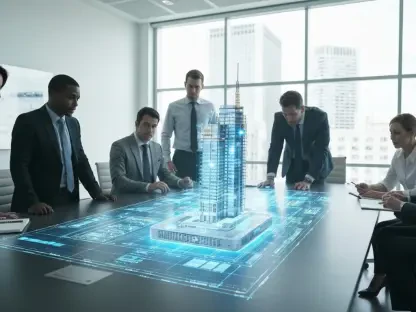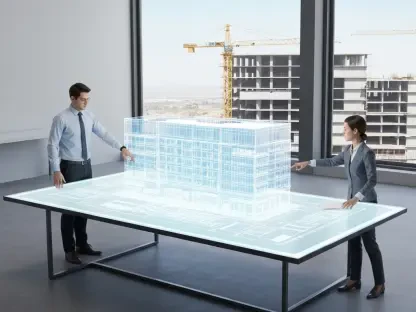In the heart of Australia’s ongoing housing crisis, a promising solution is gaining momentum with the rise of the build-to-rent (BtR) sector, a model where properties are purpose-built for long-term rental rather than sale, offering a stark contrast to the traditional build-to-sell framework. This approach prioritizes stability for tenants through thoughtfully designed communities while providing investors with a reliable stream of income in a volatile real estate landscape. As housing affordability continues to slip out of reach for many Australians, BtR emerges as a potential game-changer, capable of addressing the acute shortage of rental options. Yet, the path to widespread adoption is fraught with challenges, as the sector’s success depends heavily on the ability to deliver projects at an unprecedented pace and on a massive scale. The urgency to overcome systemic barriers—ranging from cost inflation to regulatory delays—has never been greater, with the future of housing accessibility hanging in the balance.
Addressing Housing Shortages with BtR Growth
The build-to-rent sector is rapidly evolving from a peripheral concept to a central pillar in Australia’s strategy to combat housing shortages. Unlike conventional models focused on individual ownership, BtR developments are crafted with renters in mind, integrating amenities such as fitness centers, communal green spaces, and dedicated work areas to foster a sense of community. This renter-centric design not only enhances the living experience but also attracts investors seeking steady, long-term returns amidst market fluctuations. The dual benefit of social impact and financial stability has propelled interest in BtR, positioning it as a vital mechanism to bridge the gap between supply and demand. However, for this model to truly transform the housing landscape, developers must accelerate delivery to meet the growing needs of an underserved population, a task that demands both innovation and resolve.
The momentum behind BtR is undeniable, yet the scale of the housing crisis requires a response that matches its magnitude. Each year, the disparity between available rentals and tenant demand widens, placing immense pressure on the industry to expand output. While the sector’s growth trajectory is encouraging, persistent obstacles like escalating costs and limited resources threaten to slow progress at a critical juncture. Addressing these issues head-on is essential if BtR is to fulfill its potential as a cornerstone of housing reform. Strategic planning and collaboration across stakeholders—developers, investors, and policymakers—are necessary to ensure that projects move from blueprint to reality swiftly. Without this concerted effort, the promise of BtR risks remaining just out of reach, leaving countless Australians struggling to find stable, affordable homes in an increasingly competitive market.
Navigating the Obstacles to BtR Expansion
Despite the optimism surrounding build-to-rent projects, significant hurdles stand in the way of achieving the necessary scale to impact Australia’s housing crisis. Rising construction costs, driven by volatile material prices and fierce competition for resources from major infrastructure initiatives like the Brisbane 2032 Olympics, are creating financial strain for developers. Coupled with persistent labor shortages and drawn-out approval processes, these challenges often result in project delays or outright cancellations. Such setbacks not only undermine investor confidence but also hinder the sector’s ability to deliver housing solutions when they are most needed. Tackling these barriers requires a proactive approach, with a focus on streamlining processes and securing resources to keep timelines on track.
Beyond financial and logistical constraints, the complexity of managing BtR projects adds another layer of difficulty. Ensuring economic viability demands meticulous cost control from the earliest stages of planning, alongside strategies like early contractor involvement to lock in competitive pricing and mitigate supply chain disruptions. Regulatory delays further complicate the landscape, as lengthy permitting processes can stall momentum and inflate budgets. To counter these issues, developers must advocate for policy reforms that expedite approvals while maintaining rigorous standards. The stakes are high, as failure to navigate these obstacles could limit BtR’s reach, preventing it from addressing the urgent rental housing shortage. A combination of innovative thinking and disciplined execution is critical to overcoming these challenges and ensuring that projects move forward without compromising quality or affordability.
Leveraging Technology and Design for BtR Success
Innovation in construction methods and technology is proving to be a lifeline for the build-to-rent sector as it strives to meet ambitious delivery goals. Modular construction, for instance, offers a compelling way to reduce build times by assembling components off-site, ensuring greater quality control and minimizing waste. Meanwhile, digital tools like Building Information Modeling (BIM) are transforming project planning by enhancing design coordination and providing accurate cost forecasts, which are invaluable for long-term asset management. These advancements are not mere conveniences but essential strategies for developers aiming to stay competitive in a market where speed is paramount. Embracing such technologies can significantly boost efficiency, allowing BtR projects to scale rapidly and address housing demands more effectively.
Equally important to the success of BtR is the emphasis on design that prioritizes tenant satisfaction and community building. Developments must transcend basic accommodation by incorporating features like pet-friendly zones, shared recreational spaces, and sustainable elements that appeal to modern renters. Striking a balance between initial capital expenditure and ongoing operational costs is crucial, as over-investing in amenities can erode profitability, while under-investing risks losing tenant interest. Thoughtful design choices, such as durable materials and energy-efficient systems, contribute to long-term value by reducing maintenance expenses and enhancing resident retention. As the sector matures, getting the design brief right from the outset will be a defining factor in differentiating BtR offerings in a crowded market, ensuring they remain attractive to both tenants and investors over decades.
Sustainability and Long-Term Value in BtR Projects
Environmental responsibility is becoming a non-negotiable aspect of build-to-rent developments, with sustainability directly influencing both tenant satisfaction and asset value. Decisions around building orientation, insulation, and mechanical systems play a pivotal role in minimizing operating costs and environmental impact, aligning with broader environmental, social, and governance (ESG) goals. Integrating renewable energy sources and reducing embodied carbon during construction are increasingly seen as value drivers rather than mere compliance measures. These choices not only lower utility expenses for tenants but also enhance the resilience of properties against climate challenges, making them more appealing in a market that prioritizes green living. Prioritizing sustainability from the design phase is essential for future-proofing BtR assets.
Operational excellence further underpins the long-term success of BtR projects, as maintaining high standards over decades is critical to resident retention and investor returns. Proactive maintenance strategies, standardized systems for ease of repair, and a whole-of-life cost perspective help balance quality with affordability. Durable finishes and robust infrastructure reduce the frequency of costly upgrades, preserving the appeal of developments while keeping expenses in check. Beyond construction, fostering a strong resident experience through responsive management and community engagement ensures that BtR properties remain desirable places to live. As the sector evolves, this focus on sustainability and operational foresight will distinguish successful projects, cementing BtR’s role as a transformative force in Australia’s housing landscape.
Reflecting on BtR’s Path Forward
Looking back, the journey of the build-to-rent sector reveals a landscape filled with both immense potential and formidable challenges that demand urgent attention. Developers grapple with soaring costs and resource constraints, yet the promise of stable returns and social impact keeps investor interest alive. Innovations like modular construction and digital tools pave the way for faster delivery, while sustainable design emerges as a cornerstone of long-term value. Moving forward, the focus must shift to actionable strategies—streamlining regulatory processes, fostering strategic partnerships, and embedding technology at every stage of development. Collaboration among stakeholders remains key to scaling BtR projects effectively. By addressing these imperatives, the sector can solidify its position as a lasting solution to housing shortages, reshaping the rental market for generations to come with a commitment to speed, scale, and quality.









